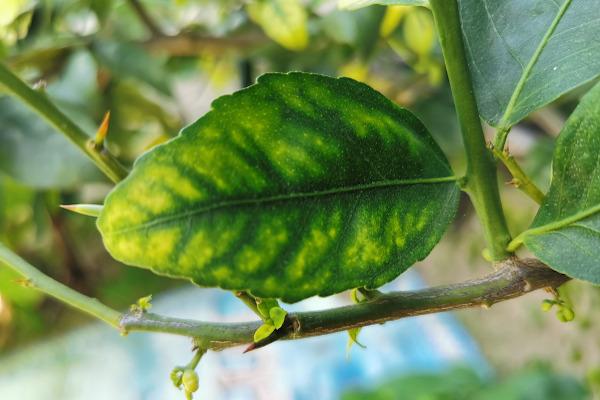Angiosperms are complex plants that have roots, stems, leaves, flowers, fruits and seeds.
They represent the most diverse group of plants, with more than 250,000 species. Angiosperms occur in the most varied types of habitats, from aquatic to arid environments.
The term angiosperm is derived from the Greek angels, bag and sperma, seed.

Angiosperms are plants that have flowers and fruits, such as the orange tree.
General features
Angiosperms are characterized by the presence of flowers and fruits that surround the seed.
Structure
Angiosperm plants are the most complex in nature. Therefore, they have different structures.
Root, Leaves and Stem
Angiosperms have several root types, such as pivoting, fasciculate, tuberous, tubular, pneumatophore and sucker.
Leaves are involved with the processes of photosynthesis, respiration and transpiration. Angiosperm plants have leaves with different shapes and sizes.
the main types of stems The aerial parts of the angiosperms are: woody trunk (trees), stem (herbaceous), stem (palm trees), stem (bamboo) and succulent (cactus).
Flowers
The flower is considered the reproductive structure of the plant.
The flowers are formed by modified and specialized leaves. They are composed of four types of structures: sepals, petals, stamens and carpels.
- sepals: Usually green in color, located below the petals. They protect the immature flower, enveloping it and forming the floral bud. Together they form the Cup.
- petals: Colored portion with the function of attracting pollinators. Together they form the corolla.
- Stamen: Male structure of the flower. It has an elongated portion, the fillet and a terminal portion, the anther. The anther has 4 pollen sacs, the microsporangia, where pollen grains are produced. The set forms the androce.
- Carpel: Feminine structure of the flower. It is formed by the stigma and ovary. The stigma is the place that receives the pollen grain and in the ovary there are one or more eggs. Each egg contains a megasporangium. A flower can have more than one carpel, separated or fused together. When they are fused they form the pistil. All carpel structures form the gyneceous.

Flower structure of an angiosperm
Learn more about the Types of Flowers and Their Functions.
fruits
The fruit is a unique structure of angiosperms. It is a fleshy portion that develops from the ovary after fertilization.
All parts of the fruit are derived from the flower. The fruit is the result of the development of the ovary and the seed of the egg's development after fertilization. Therefore, if a fruit has a seed, it is because the ovary had only one egg. And if the ovary has more than one egg, the fruit will have more than one seed.
The functions of the fruit are the propagation of the species and the protection of the seed.
Learn more about Types of Fruits.
Life Cycle and Reproduction
The reproduction of angiosperms begins with pollination. THE pollination it is the transport of the pollen grain from the anther to the stigma, where the pollen tube is formed.
Upon settling in the stigma, the pollen grain germinates and forms the pollen tube. This grows, through the stylet, until reaching the egg, in the ovary.
The egg has two integuments and a large megaspore mother cell (2n) that undergoes meiosis and gives rise to four cells (n), of which three degenerate and one forms the functional megaspore (n).
The functional megaspore undergoes mitosis and gives rise to the embryo sac with the following cells: an oosphere, two synergides, three antipodes and a central cell with two polar nuclei.
Meanwhile, inside the pollen tube three nuclei can be found: two are sperm nuclei (gametes) and the other is the tube nucleus that controls its growth.
When it reaches the egg, the pollen tube releases its two sperm nuclei. A spermatic nucleus (n) fertilizes the oosphere (female gamete - n) and forms a zygote (2n) that will give to the embryo.
The other sperm nucleus joins the two polar nuclei of the egg, forming a triploid nucleus, which will give rise to the secondary endosperm that will nourish the embryo. After fertilization, the embryo sac is called the secondary endosperm.
As we have seen, two fertilizations take place. Therefore, angiosperms present double fertilization, a unique feature of this group.
As the double fertilization takes place, the egg's integuments form a shell, which, containing the secondary endosperm and embryo, forms the seed. Hormones produced by the embryo stimulate the development of the fruit from the ovary.
Also read about germination.
Angiosperm Groups
Angiosperms are divided into two large groups, the monocotyledons and dicots. Such classification is based on the number of cotyledons. Cotyledons are modified embryonic leaves, responsible for transferring nutrients to plants during the initial stages of their development.
At monocots have only one cotyledon in the seed. Examples: Garlic, onion, grass, rice, wheat, oats, sugar cane, corn, asparagus, pineapple, bamboo, ginger and palm trees in general: coconut and babassu.
At dicots have two cotyledons in the seed. Examples: Pear, apple, beans, peas, guava, water lily, eucalyptus, avocado, rose, strawberry, potato, mate, tomato, jacaranda, jabuticaba, cotton, cocoa, lemon, passion fruit, cactus, castor bean, cassava, rubber tree, coffee, pumpkin and watermelon.
Also read about Botany: the study of plants.
Differences between Monocots and Dicots
Seed
- Monocots: Seeds with a cotyledon;
- Dicotyledons: Seeds with 2 cotyledons.
Sheets
- Monocots: Leaves with parallel ribs (parallelnerves);
- Dicotyledons: Leaves with reticulated or feather-like ribs (reticulinervia or peninervia).
Stalk
- Monocots: Disorderly arrangement of the sap-conducting vessels in the stem;
- Dicotyledons: Cylindrical arrangement of the sap-conducting vessels in the stem.
Flowers
- Monocots: Trimere flowers;
- Dicotyledons: Dimer, tetramer or pentamer flowers.
Source
- Monocots: Root fasciculate or hairy;
- Dicotyledons: Pivoting or axial or main root.
Want to know more? Also read about the gymnosperms, plants that do not produce fruit.

